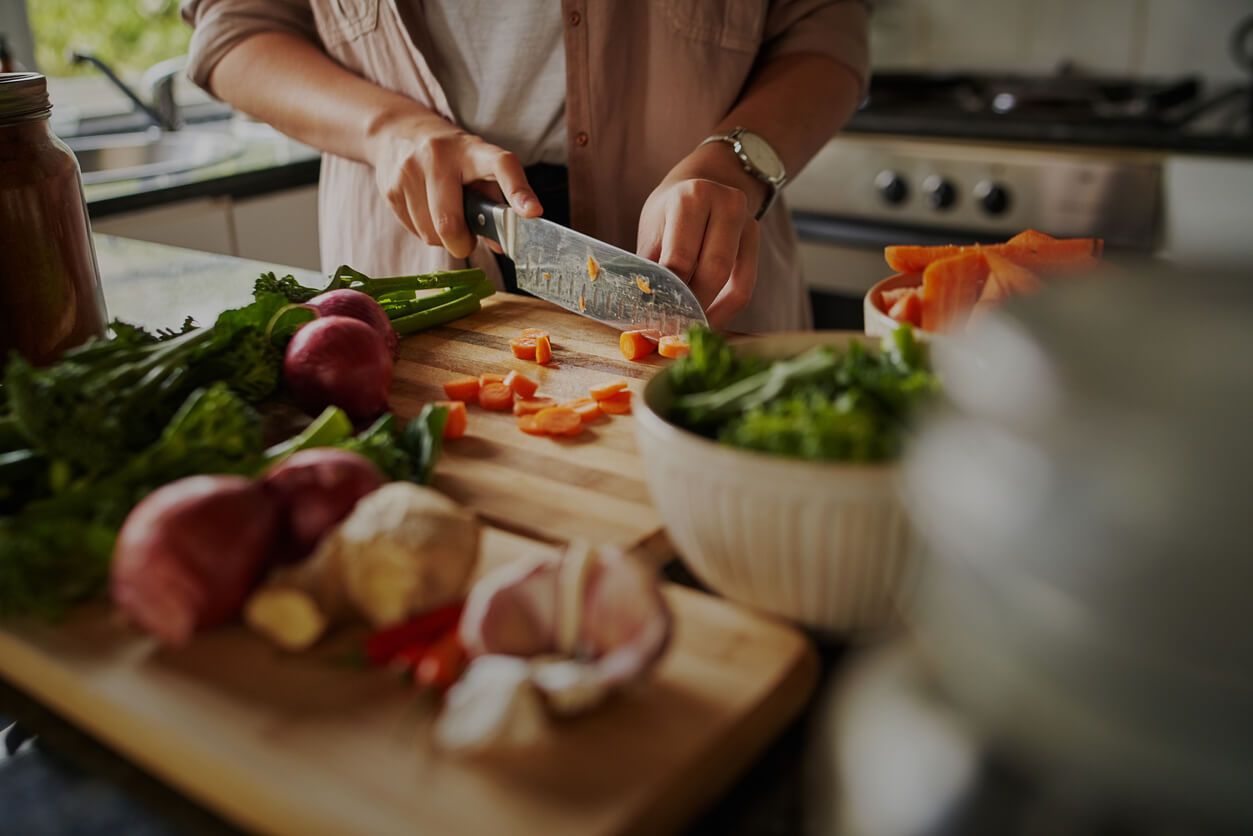Welcome to the fascinating world of kitchen knives!
Today, we will slice through the science behind an effective vegetable knife.
You're in the right place if you've ever wondered why some knives seem to glide through a tomato while others turn it into a squashed mess.
So, let's sharpen our knowledge and cut right to the chase!
Jump To:
- The Blade: Material and Sharpness
- Balance and Weight
- The Handle: Design and Material
- Edge Angle and Cutting Technique
- The Science Behind the Perfect Cut
- Frequently Asked Questions
- Further Reading
The Blade: Material and Sharpness
The blade is the heart of any knife. Its material and sharpness significantly influence the knife's performance. High-carbon steel is popular for vegetable knives due to its superior sharpness and edge retention. However, stainless steel is also a common choice due to its rust resistance and durability.
Sharpness is crucial when it comes to vegetable knives. A sharp knife makes clean, precise cuts, preserving the integrity of the vegetable and reducing the risk of injury. Remember, a dull knife is a dangerous knife!
Balance and Weight
The balance and weight of a knife can significantly impact its performance and the user's comfort. A well-balanced knife feels comfortable in your hand and reduces fatigue during prolonged use.
The weight of a knife can vary based on its design and the materials used.
Some chefs prefer a heavier knife for tasks like chopping hard vegetables, while others prefer a lighter knife for tasks requiring precision and control.
The Handle: Design and Material
The handle of a knife is more than just a place to hold. Its design and material can significantly impact the knife's performance and the user's comfort.
A well-designed handle provides a secure grip, reducing the risk of slippage during use. Common materials used for knife handles include wood, plastic, and metal, each offering different durability, comfort, and hygiene benefits.
Furthermore, the design of the handle can also affect the knife's balance. For instance, a full tang design, where the metal of the blade extends through the handle, can provide better balance and durability.
Edge Angle and Cutting Technique
The edge angle of a knife blade plays a crucial role in its cutting performance. A smaller edge angle results in a sharper knife, ideal for precision tasks like slicing delicate vegetables. However, a knife with a smaller edge angle may require more frequent sharpening.
The cutting technique also plays a role in the effectiveness of a vegetable knife. For example, a slicing motion is often more effective than a simple downward chop, as it utilizes the entire length of the blade and reduces the risk of the knife getting stuck in the vegetable.
In addition, the type of cut can affect the taste and texture of the vegetable. For instance, a julienne cut can create thin, uniform strips perfect for stir-fries, while a dice cut can produce small, even cubes ideal for soups and stews.
The Science Behind the Perfect Cut
Understanding the science behind a good vegetable-cutting knife can help you make the most of your kitchen tools. Each aspect contributes to the knife's overall performance, from the blade's material and sharpness to the knife's balance and weight.
By choosing a knife that suits your needs and using it correctly, you can enhance your cooking experience and create dishes that are not only delicious but also visually appealing.
Frequently Asked Questions
What makes a good vegetable knife?
A good vegetable knife has a sharp, high-quality blade, a comfortable and secure handle, and a good balance and weight. It should be able to make clean, precise cuts and be comfortable to use for extended periods.
Which knife is best for cutting vegetables?
The best knife for cutting vegetables depends on the specific task. For example, a chef's or Santoku knife is versatile and can handle most vegetable-cutting tasks. However, a paring knife might be more suitable for delicate tasks like peeling or mincing.
Is it better to cut vegetables with a sharp or toothed knife?
A sharp, smooth-edged knife is generally better for cutting vegetables. It makes clean, precise cuts and preserves the integrity of the vegetable. A toothed knife, like a serrated knife, is more suitable for cutting through tough or waxy surfaces, like the skin of a tomato.
What are 3 main things to focus on when using a knife?
When using a knife, focus on maintaining a secure grip on the handle, using the correct cutting technique, and keeping the knife sharp. These practices enhance your control over the knife, improve your cutting precision, and reduce the risk of injury.
Conclusion
The science behind an effective vegetable knife is a blend of design, material choice, and user technique. Understanding these elements can transform your cooking experience, turning a mundane task into a joy. Remember, the right knife can make all the difference in your culinary adventures.
If you're in the market for a new vegetable knife, don't miss our comprehensive guide on the best knife for cutting vegetables. It's packed with useful information to help you make an informed choice.
Further Reading
- A Micro-Guide to Different Types of Kitchen KnivesLearn more about the different types of kitchen knives and their unique features.
- Essential Care for Your Vegetable Knives: Maintenance Tips & Techniques: Find out essential tips and techniques for maintaining your vegetable knives.
- 7 Tips for Knife Care And Maintaining Your Knife by KOI: Learn how to prolong the life of your knives with KOI's insightful guide



